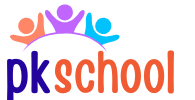In a world where scrolling through social media feels like a full-time job, reading can sometimes take a backseat. But what if there was a way to turn those reluctant readers into bookworms? Enter reading intervention—a superhero in disguise, swooping in to rescue struggling students from the clutches of illiteracy.
Imagine a classroom where students are not just reading but actually enjoying it. With targeted strategies and a sprinkle of creativity, reading intervention transforms the dreaded reading hour into an adventure. It’s not just about decoding words; it’s about unlocking the magical world of stories and knowledge. Let’s dive into the importance of reading intervention and discover how it can change lives one page at a time.
Table of Contents
ToggleOverview of Reading Intervention
Reading intervention consists of specific strategies aimed at assisting students who struggle with literacy. Effective reading programs target various factors that affect reading skills, such as phonemic awareness, vocabulary acquisition, and comprehension techniques. These interventions rely on both individual and group settings, facilitating personalized support for each learner.
Programs often utilize evidence-based practices. Research indicates that interventions like guided reading and phonics instruction significantly enhance reading abilities. Data shows that students involved in reading interventions typically demonstrate marked improvement in literacy skills compared to their peers not participating in such programs.
Teachers play a pivotal role in implementing these strategies. Educators assess students’ reading levels to tailor interventions that meet each child’s unique needs. Continuous monitoring of progress informs instruction, ensuring that adaptations occur when necessary. Consequently, students may develop confidence in their reading capabilities as they experience gradual success.
Incorporating engaging materials is essential. Books that resonate with students’ interests encourage active participation and foster a love for reading. Additionally, integrating technology within reading interventions offers dynamic resources, enhancing the learning experience.
Communities also contribute to the success of reading interventions. Collaborative efforts among schools, parents, and local organizations can provide additional resources and support. These partnerships often lead to increased motivation for students, further promoting literacy development.
Overall, effective reading intervention transforms challenges into opportunities. Supporting struggling readers not only enhances academic performance but also enriches their lives, inspiring a lifelong passion for learning and literature.
Types of Reading Interventions

Reading interventions come in various forms, each tailored to address specific literacy challenges. These strategies enhance students’ reading capabilities and motivate them to enjoy the reading process.
Phonics-Based Interventions
Phonics-based interventions focus on the relationship between letters and sounds, helping students decode words effectively. Programs utilize systematic instruction that emphasizes phonemic awareness and sound blending. Small group settings often facilitate personalized attention, allowing educators to identify each child’s needs. Research supports that students engaged in phonics instruction demonstrate improved decoding skills compared to those who don’t participate in such programs. Tools may include phonics games, structured lessons, and guided reading sessions, encouraging a deeper understanding of word structures. The structured approach fosters confidence in reading, resulting in higher engagement levels among students.
Comprehension Strategies
Comprehension strategies aim to enhance students’ understanding of texts by employing various techniques. Methods include graphic organizers, summarization techniques, and questioning strategies that encourage critical thinking. Teachers often model these strategies during guided reading sessions, helping learners make connections between texts and their own experiences. This practice enhances retention and fosters discussion, allowing students to engage with the material actively. Offering diverse reading materials that cater to different interests can significantly increase student motivation. Regular assessments monitor progress and ensure comprehension strategies remain effective and relevant for each student.
Implementing Reading Interventions
Effective implementation of reading interventions involves systematic assessment and tailored strategies. These components ensure optimal support for struggling readers.
Assessment and Identification
Assessment helps identify students’ specific reading challenges. Teachers use tools like standardized tests and informal assessments to evaluate skills such as phonemic awareness and comprehension. Identifying strengths and weaknesses provides insight into personalized intervention needs. Moreover, regular monitoring tracks progress and adjusts instructional strategies. This ongoing evaluation engages students more deeply in their reading journey.
Strategies for Educators
Educators employ various strategies to support struggling readers. Structured literacy programs focus on phonics instruction, enabling students to decode words effectively. Small-group settings allow for targeted support and foster collaboration among peers. Incorporating technology enhances learning through interactive platforms and engaging digital texts. Utilizing diverse materials keeps students motivated, ensuring that interventions remain relevant to their interests. Lastly, promoting a supportive classroom environment nurtures a love for reading and encourages students to take risks in their learning.
Effectiveness of Reading Interventions
Reading interventions demonstrate significant efficacy in improving literacy skills among struggling readers. Various studies underline their importance in educational settings.
Research Findings
Notable research indicates that structured reading interventions lead to higher reading proficiency. A study published in the Journal of Educational Psychology revealed that targeted interventions increased reading fluency by up to 30% within six months. Additionally, students receiving phonics instruction scored higher on standardized tests compared to their peers. Observations show that frequent progress monitoring enhances learning outcomes, allowing educators to adjust strategies effectively. Emphasizing evidence-based practices, like guided reading sessions, fosters better comprehension and retention.
Case Studies
Successful case studies provide concrete evidence of reading interventions’ impact. A school district in Texas implemented a small-group phonics program, resulting in a 40% improvement in reading scores over one academic year. Another example highlights a middle school in California that incorporated technology, leading to increased engagement among students struggling with reading. Feedback from teachers indicates that personalized interventions cultivate a supportive learning environment. These examples illustrate how tailored approaches in reading intervention effectively foster academic growth and a passion for reading.
Challenges and Considerations
Implementing reading interventions involves navigating various challenges and considerations. Teachers encounter diverse student needs, requiring individualized instruction to effectively address each reader’s unique difficulties. Additionally, balancing curriculum demands with intervention strategies poses significant hurdles. Educators must integrate reading interventions without compromising overall academic standards.
Resource availability also impacts intervention success. Schools often face budget constraints, limiting access to engaging materials and technology that enhance learning experiences. Effective programs often depend on community support, so building partnerships becomes essential. Collaboration with parents and local organizations can enrich resources and provide further motivation to students.
Monitoring student progress requires consistent assessment that may strain teachers’ time and resources. Using standardized tests and informal evaluations helps identify specific reading challenges. Ongoing evaluation ensures that students receive appropriate support tailored to their developmental progress.
Professional development for educators is crucial when implementing reading interventions. Training in evidence-based practices equips teachers with the necessary skills to execute strategies effectively. Continuous learning opportunities enhance their ability to engage and support struggling readers.
Emphasizing a supportive classroom environment fosters a love for reading among students. Creating a culture that encourages risk-taking in learning allows students to build confidence in their abilities. While reading intervention programs demonstrate significant positive outcomes, ongoing adaptation of strategies remains vital to meet evolving student needs.
Reading intervention isn’t just a tool for improving literacy; it’s a pathway to fostering a lifelong love for reading. By implementing targeted strategies and engaging materials, educators can create an environment where struggling readers feel supported and motivated. The collaboration between teachers, parents, and communities amplifies the impact of these interventions, ensuring that every child has the opportunity to succeed.
As research continues to highlight the effectiveness of tailored reading programs, the importance of ongoing assessment and professional development for educators becomes clear. With the right resources and support, reading intervention can transform not only individual student experiences but also the overall culture of literacy within schools. Embracing these strategies paves the way for a brighter future where every student can thrive as a confident reader.



